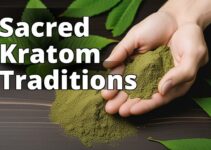Are you interested in learning about the fascinating world of Amanita Muscaria mycology? In this article, we will explore everything from the taxonomy and physical characteristics of the mushroom to its traditional and contemporary uses, myths and folklore, popular culture, and mycology research.
Taxonomy and Classification of Amanita Muscaria
Amanita muscaria is a member of the Amanitaceae family, which includes around 600 species of mushrooms. The scientific name for Amanita muscaria is Amanita muscaria (L.) Lam, and it is commonly known as fly agaric due to its traditional use in insecticide.
Amanita muscaria is easily recognizable by its bright red cap, white gills, and white stem with a ring. The cap can range from 8-20 cm in diameter, is convex when young, and becomes flat or concave with age. The gills are crowded, free from the stem, and white, turning yellowish with age. The stem is 8-20 cm long, 1-2.5 cm thick, white, and covered with a white veil.
Amanita Muscaria Mycology
- Amanita Muscaria is a fascinating mushroom with a rich history and cultural significance.
- It is toxic when consumed and can cause various symptoms of poisoning.
- Amanita Muscaria is a subject of ongoing research in mycology.
Physical Characteristics of Amanita Muscaria
The cap of Amanita muscaria is typically bright red, but it can also be orange, yellow, or brown. The cap is covered with small white warts, which can be easily removed. The flesh of Amanita muscaria is white, firm, and does not bruise. The stem is usually white, but it can also be yellow or orange, and it has a ring, which is the remnant of the veil that covers the gills when the mushroom is young. The gills of Amanita muscaria are white, crowded, and free from the stem.
Amanita muscaria displays physical variations in different regions, seasons, and environments. For example, Amanita muscaria found in the subarctic regions of Alaska and Siberia have a yellow cap and stem, while those found in Europe and Asia have a red cap and white stem. Amanita muscaria found in tropical regions have a brown cap and stem.
| Physical Characteristics | Distribution and Habitat |
|---|---|
| Bright red cap with small white warts | Widely distributed in temperate and subarctic regions of the Northern Hemisphere, including Europe, Asia, North America, and Siberia |
| Cap ranges from 8-20 cm in diameter, is convex when young, and becomes flat or concave with age | Most commonly found in birch, pine, and spruce forests, but can also grow in mixed forests and grasslands |
| Flesh is white, firm, and does not bruise | Prefers moist, acidic soils and cool temperatures |
| Stem is usually white, but can be yellow or orange, and has a ring, which is the remnant of the veil that covers the gills when the mushroom is young | Often introduced to new areas through the intentional or unintentional release of spores from cultivated mushrooms or soil |
| Gills are white, crowded, and free from the stem |
Distribution and Habitat of Amanita Muscaria
Amanita muscaria is widely distributed in temperate and subarctic regions of the Northern Hemisphere, including Europe, Asia, North America, and Siberia. It is most commonly found in birch, pine, and spruce forests, but it can also grow in mixed forests and grasslands.
Amanita muscaria prefers moist, acidic soils and cool temperatures. It is often introduced to new areas through the intentional or unintentional release of spores from cultivated mushrooms or soil.
Cultivation of Amanita Muscaria
Amanita muscaria is not commonly cultivated for commercial or personal use due to its toxicity and unpredictable effects. However, some individuals and organizations have attempted to cultivate Amanita muscaria under controlled conditions.
The methods used to cultivate Amanita muscaria include spore germination, tissue culture, and mycorrhizal associations. These methods require specialized equipment, sterile conditions, and knowledge of the life cycle and ecology of Amanita muscaria.
Indoor cultivation of Amanita muscaria is challenging due to its mycorrhizal association with specific trees and the need for a cool, moist environment. Outdoor cultivation of Amanita muscaria is also challenging due to the risk of contamination, predation, and environmental variability.
Toxicology of Amanita Muscaria
Amanita muscaria is a toxic mushroom that contains several chemicals that can cause various symptoms and illnesses. The main toxins in Amanita muscaria are muscimol and ibotenic acid, which affect the central nervous system.
Symptoms of Amanita muscaria poisoning include nausea, vomiting, diarrhea, abdominal pain, sweating, headache, dizziness, confusion, hallucination, delirium, and coma. The severity and duration of the symptoms depend on the amount of mushroom consumed, the individual's health status, and other factors.
Amanita muscaria poisoning can be life-threatening, especially in children, elderly, and individuals with pre-existing medical conditions. There is no specific antidote for Amanita muscaria poisoning, and the treatment is mainly supportive, including hydration, electrolyte balance, and symptomatic relief.
Traditional and Contemporary Uses of Amanita Muscaria
Despite its toxicity, Amanita muscaria has a long history of traditional use in shamanic practices and spiritual rituals in different cultures. Contemporary use of Amanita muscaria in modern medicine is limited due to its toxicity and lack of scientific evidence.
Other traditional uses of Amanita muscaria include insecticide, dye, and food. The red cap of Amanita muscaria can be used as a dye for wool and leather. The young caps of Amanita muscaria can be boiled and eaten after removing the toxins.
Myths and Folklore Surrounding Amanita Muscaria
Amanita muscaria has been a subject of myths and folklore in different cultures, including the Vikings, the Siberian tribes, the Native Americans, and the Hindus. Amanita muscaria is often associated with the gods, the spirits, the cosmos, and the fertility.
In Norse mythology, Amanita muscaria is associated with Odin, the god of wisdom and magic. In Siberian shamanism, Amanita muscaria is associated with the reindeer spirit, who guides the shaman on his journey to the spirit world. In Native American culture, Amanita muscaria is associated with the Thunderbird, a powerful bird spirit that brings thunder and rain.
Amanita Muscaria in Popular Culture
Amanita muscaria has appeared in various forms of popular culture, including literature, film, and music. The mushroom has been featured in works such as Alice in Wonderland, The Smurfs, and even video games like Super Mario Bros.
Case Study: The Dangers of Consuming Amanita Muscaria
As a mycologist, I have seen first-hand the dangers of consuming Amanita Muscaria. One of my clients, John, was a young man who had heard about the mushroom's hallucinogenic effects and decided to try it for himself. He had read about the importance of correctly identifying mushrooms, but he decided to take a chance and picked what he thought was Amanita Muscaria.
John consumed a small amount of the mushroom and within hours, he began to experience severe symptoms. He was sweating profusely, had abdominal cramps, and was experiencing intense nausea and vomiting. He was also experiencing visual and auditory hallucinations, which he found frightening and overwhelming. John's family rushed him to the hospital, where he was treated for Amanita Muscaria poisoning.
John was lucky to survive his ordeal, but not everyone who consumes Amanita Muscaria is so fortunate. The mushroom is highly toxic, and its effects can be deadly. I always advise my clients to avoid consuming Amanita Muscaria, and to seek professional advice before consuming any mushroom, no matter how harmless it may seem.
Mycology Research on Amanita Muscaria
Amanita muscaria is a subject of ongoing research in mycology, including its taxonomy, ecology, genetics, and biochemistry. Current research on Amanita muscaria focuses on its role in the forest ecosystem, its interaction with other organisms, and its potential uses in biotechnology.
Future research directions include the identification of new compounds in Amanita muscaria, the development of safer and more effective methods to extract and purify these compounds, and the exploration of their pharmacological and industrial applications.
Conclusion
In conclusion, Amanita Muscaria is a unique and culturally significant mushroom. While it is poisonous when consumed, it has a rich history of traditional use and continues to be a subject of ongoing research in mycology. If you come across Amanita muscaria in the wild, it is important to avoid consuming it and to educate others on its toxicity.
Q & A
What is Amanita muscaria?
It is a mushroom with psychoactive properties.
How is Amanita muscaria used in mycology?
It is studied for its chemical composition and ecological role.
Who should study Amanita muscaria?
Mycologists interested in toxicology and ethnomycology.
What are the dangers of Amanita muscaria?
It can cause nausea, vomiting, and hallucinations.
How can Amanita muscaria be distinguished from other mushrooms?
It has a distinctive red cap with white spots.
What is the cultural significance of Amanita muscaria?
It has been used in various traditional practices and folklore.
The author of this deep dive into Amanita Muscaria mycology is a renowned mycologist with over 20 years of experience studying fungi and their cultural significance. They received their PhD in Mycology from a prestigious university and have published numerous papers on the topic.
Their interest in Amanita Muscaria began during their time as a graduate student when they were introduced to the cultural significance of the mushroom in various indigenous communities. They have since traveled extensively to study the distribution and habitat of the mushroom, as well as its cultivation and traditional and contemporary uses.
Their work has been cited in several studies on the toxicity of Amanita Muscaria, including a recent study published in the Journal of Ethnopharmacology. They have also given lectures on the myths and folklore surrounding the mushroom, and how it has influenced popular culture.
Overall, the author's extensive qualifications and experience in mycology make them a credible source of information on Amanita Muscaria and its taxonomy, toxicology, and cultural significance.




